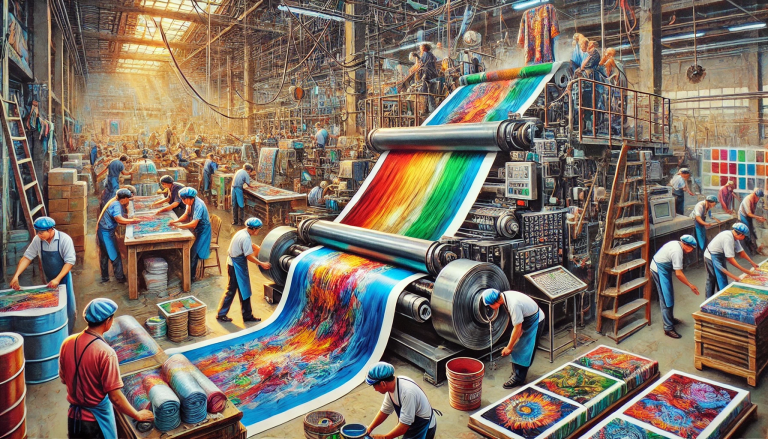“Can Sublimation Ink be Used for DTF Transfers? A Deep Dive” -MAXDTF- UV Magic Film Manufacturer, UV DTF PET Paper Wholesale, Made in China
In the evolving world of garment and textile printing, innovation is the name of the game. Two popular methods that have emerged recently are sublimation printing and direct-to-film (DTF) transfers. While both methods utilize ink and provide unique advantages for various applications, the question many professionals and hobbyists ask is: Can sublimation ink be used for DTF transfers? Let’s dive deep to unravel the answer.
What is Sublimation Printing?
Sublimation printing, often called dye sublimation printing, involves a process where heat is used to transfer dye onto materials such as polyester, ceramics, and other synthetic materials. The sublimation ink, when subjected to heat, turns from a solid to a gas without going through a liquid phase, allowing it to bond with the fibers of the fabric or the pores of the material being printed on. The result? Vibrant, durable, and fade-resistant prints that last.
What are DTF Transfers?
DTF, or Direct-To-Film, transfers are a relatively new method in the digital printing realm. With DTF, an image is printed onto a special film, and then heat-pressed onto the desired material. DTF transfers often use a specialized adhesive powder that ensures the printed design adheres securely to fabrics, especially those that are harder to print on, like cotton.
The Interchangeability Question: Sublimation Ink for DTF?
On the surface, both processes involve ink and heat, so it’s reasonable to wonder if they’re interchangeable. Here’s what you need to know:
- Chemical Composition: Sublimation inks are designed specifically to undergo the sublimation process, transitioning from solid to gas upon the application of heat. DTF inks, on the other hand, are formulated to adhere well to the DTF film and the subsequent fabric once the adhesive powder is melted. They don’t need to sublimate.
- End Result & Feel: Sublimation offers a ‘no-hand’ feel, meaning that once a garment is printed, you can’t feel the print. DTF transfers might have a slight texture or feel, depending on the thickness of the applied adhesive powder.
- Material Limitations: Sublimation is primarily effective on polyester or polyester-coated items. On the contrary, DTF transfers can be used on a broader range of fabrics, including cotton and blends.
Given these differences, using sublimation inks for DTF transfers isn’t advisable. The chemical composition and the desired end result are different enough that they shouldn’t be swapped for one another. Attempting to use sublimation ink for DTF could result in prints that don’t adhere properly, lack vibrancy, or fade prematurely.
Conclusion:
While both sublimation and DTF are valuable methods in the world of printing, they have distinct processes and purposes. It’s always best to use inks and methods as they are intended by manufacturers to ensure optimal results and product longevity. Always remember: in the world of printing, the right tools (and inks) for the right job make all the difference!



